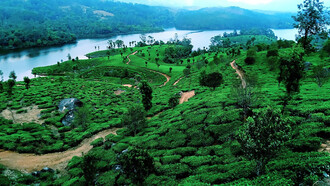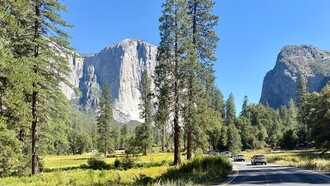There are multiple ways of looking at the tourism phenomenon and in recent times the concept of Geo-Strategic tourism is gaining momentum, which has the potential to not just augment a nation’s security, but also make the global system more transparent.
In India, all eyes are on the completion of Sela Tunnel: the world’s highest twin-lane mountain tunnel at a rarefied height of 13,000 feet above sea level, construction of which is expected to be completed by March 2023 and will be dedicated to the nation by Prime Minister Narendra Modi.
Many Geo-political experts think that the Sela Tunnel will be a jewel in the crown of India and a perfect riposte to China’s hegemonistic tendencies, given the Chinese Red Army’s claim that India’s North Eastern state of Arunachal Pradesh, where the tunnel is located, is their territory.
The latest Chinese incursion in the border town of Tawang, (72 Kms. from Sela Pass) on December 9th, 2022 testifies to the sinister stance of China and is best summed up by The Indian Express thus;
Bejing’s aggressive stance towards Delhi is primarily due to the glaring power differential and perception of India as a soft state. The Tawang & Yangtse area is of immense tactical importance to China. It has been repeatedly targeted by the Chinese to dislodge the Indian troops from their positions.
Prime Minister Modi is a hard nut to crack and his soaring global popularity as a statesman, coupled with his aggressive military stance towards China has resulted in the fast-track Sela Tunnel project; a timely reminder to the Chinese leadership about India’s defence capabilities.
Prime Minister Modi’s approach towards China is praiseworthy and he is in favour of robust trade and commerce linkages with China. With this agenda in mind, the government of India’s “Geo-Strategic Tourism” in the border areas is promoting tourism in the “Conflict Zone” which has the potential to alter the geo-political equations of the region from being an amphitheatre of war to a paradise for tourists.
According to TourismGeographies:
While tourism reflects classical geopolitical concerns such as inter-state competition, sovereignty, border protection and terrorism, a critical geopolitical approach demonstrates how geopolitics is not exclusively played out at the level of nation-states but also manifests at multiple scales. Today, tourism geographers highlight how geopolitics emerges at the level of the everyday in host-guest relations as well as in contests between rival powers.
Thus, based on the above observations, it can be emphasised that India’s “Geo-Strategic Tourism Mission” that is unfolding in the remote North Eastern state of Arunachal Pradesh has the potential to reshape the world’s imagination through people-to-people contacts and the Modi doctrine is demonstrating how tourism would play the role of a catalyst, bring about peace and stability in a region as strategic as Tawang/Yangtse plateau.
Sela Tunnel indeed is an engineering marvel, built at a stupendous height of 13000 feet above sea level, this all-weather tunnel is the world’s longest with a 12 Km. long approach road. India will benefit immensely both strategically as well as from the tourism standpoint.
In the winter months, Sela Pass receives heavy snowfall and the road becomes inaccessible, thereby causing untold hardship to both the civilians as well as the military convoys who use this strategic mountain pass to travel to the Indo-Chinese LAC (Line of Actual Control). The Sela tunnel will not only provide seamless all-year-round vehicular transport movement but also offer travellers the option of circumventing the rather dangerous and accident-prone Sela top, which looms monstrously at 13700 feet above sea level.
Geo-political experts believe that the Sela Tunnel will be a “Game Changer” for not just the Indian Army, viz-a-viz the capability to traverse through unforgiving Himalayan terrain in the harsh winter months, but also the tourism boom aftermath, that the tunnel is expected to generate.
Arunachal Pradesh's Chief Minister (Shri Pema Khandu) believes that:
it is important to have a civilian population in border areas
and with the government of India offering both financial and logistical help for comprehensive border area development, a tourism boom is in the offing, post-Sela tunnel opening.
The Sela Pass: Tawang tourism circuit isn’t just renowned for its mesmerizing natural vistas of glacial lakes, stupendous Himalayan peaks, gorgeous waterfalls, alpine grazing pastures etc... This region is of paramount spiritual significance to the world Buddhist community, blessed as it is with one of the world’s largest Buddhist monastery: The Tawang Monastery. The 6th Dalai Lama Tsangyang Gyatso was born in the Urgyeling neighbourhood of Tawang!
The outside world might not be aware of the fact that the present (14th ) Dalai Lama is a frequent visitor to Tawang and incidentally it was his first point of entry to India, following the Chinese Red Army’s invasion of Tibet in 1959. And, every time His Holiness sets foot in Tawang, the Chinese just go berserk, unable to fathom the fact that Tawang monastery is the nerve centre of His Holiness’ power plays.
The time is ripe for India Tourism and Arunachal tourism to seize this opportunity of getting the basics right in terms of tourism. Chief Minister Pema Khandu himself is a widely travelled man and a leader of the masses, whose excellent rapport with the Indian Army’s frontline troops is often seen in social media circles. Post-Sela tunnel launch, it is expected that tourist arrivals will double, given the fanfare surrounding this outstanding engineering marvel.
The need of the hour is sprucing up the Sela Pass-Tawang tourism circuit’s visitor chalets/log huts, wayside amenities, setting up high-quality festival venues, modernizing tourism transport services and further strengthening ultra adventure activities like high altitude mountain biking etc...
Thanks to the pioneering efforts of Prime Minister Modi, who is relentless in his pursuit to position India as a nation of immense possibilities, strong, dynamic and vibrant in the League of Nations, a “Vishwaguru” in the making! The Sela Tunnel is a befitting manifestation of a self-reliant India or “Atmanirbhar Bharat”.
From authoritative sources, it is learnt that the Sela tunnel has been constructed by following the methodology of the latest New Austrian Tunnelling Method (NATM) that allows for seamless all-weather travel without the need for snow swabbing. In a similar vein, it would perhaps be prudent for India Inc. to follow the Austrian Mountain Tourism model as well when it comes to the question of developing one of India’s most remote and mountainous states: Arunachal Pradesh.
The Austrian Mountain Tourism experience is globally accepted to be a yardstick and Tourism Researcher Costel Nestor beautifully puts across the Austrian Mountain Tourism model thus:
Austrian mountain tourism development comes with economic considerations, which cannot be neglected, and the concern of the people is considered more important. The man, a resident of the mountain, is in charge of planning, which is observed in rural tourism. The big question, post-Sela Pass Tunnel inauguration by Prime Minister Modi, is: Will the North Eastern region and Arunachal Pradesh in particular, finally take tourism to new heights?
Prime Minister Narendra Modi has reiterated time and again that his focus is on India’s North East and accordingly he has made “Act East Policy” a high-priority policy that is not merely related to connectivity issues alone, but a conscious effort by the government of India to reach out to ASEAN region, Japan and beyond. Honourable Prime Minister Narendra Modi is well aware of the fact that the earlier Indian perception, which was largely restricted to South Asia, needed to change and embrace the whole of East, inclusive of West Asia and Africa.
Thus, with India on the threshold of global greatness and with the Act East policy being implemented in all seriousness at the ground level, finding reflections in mega strategic infrastructure projects like the Sela Tunnel; a whooping Rs.700 crore affair; the world is waiting with bated breath how India’s Geo-Strategic tourism in the North East unfurls at the altar of global tourism!















